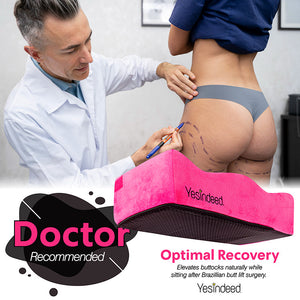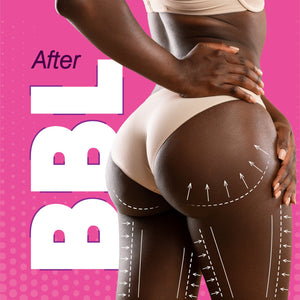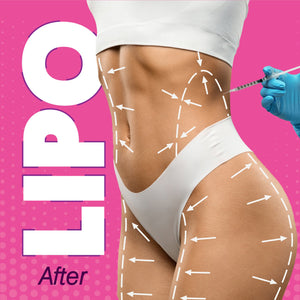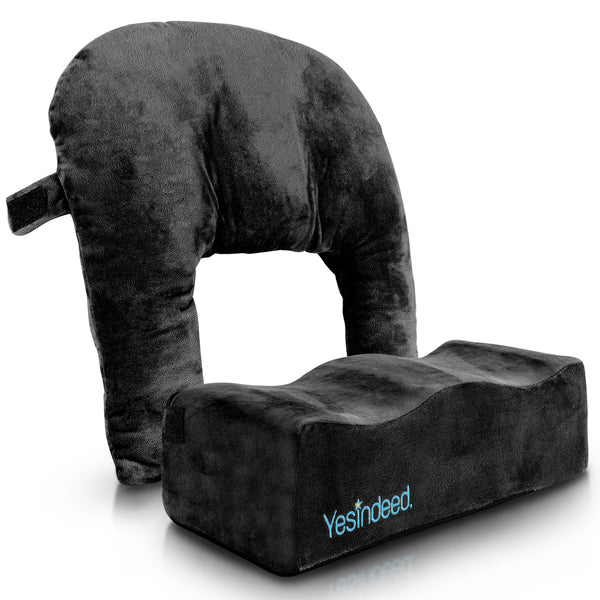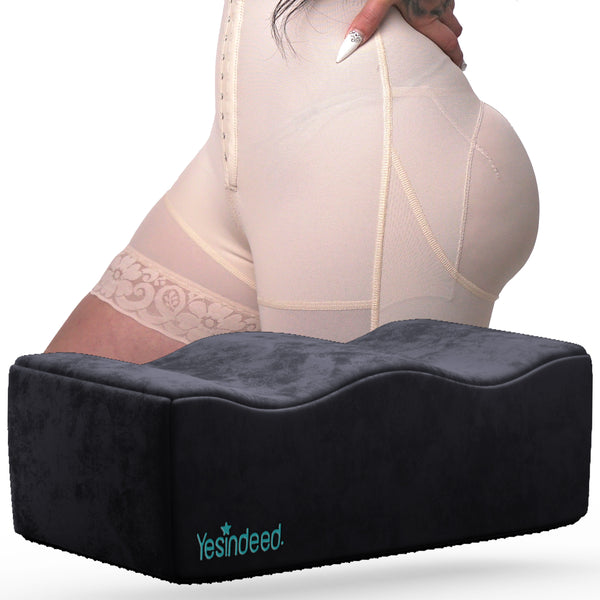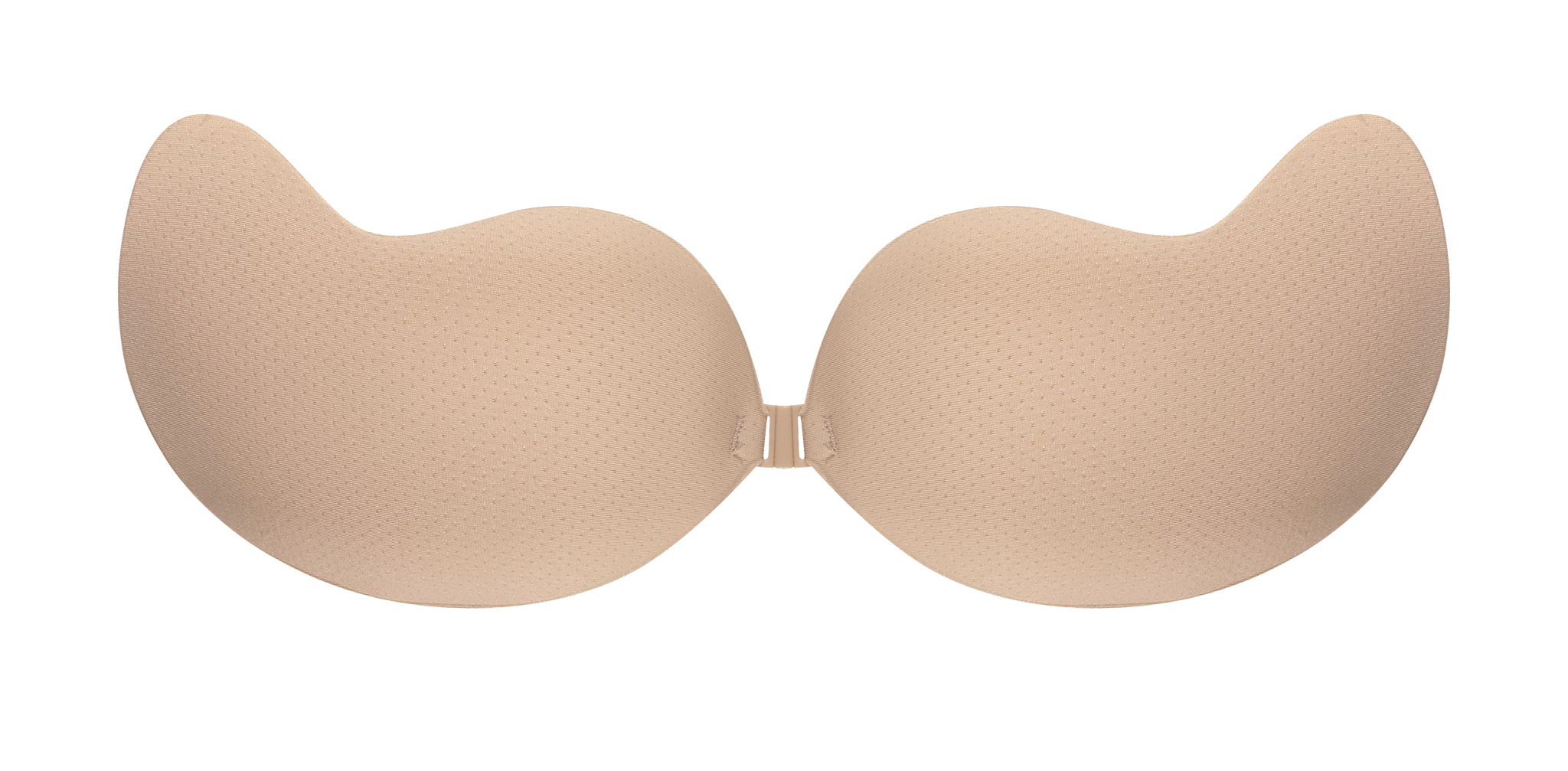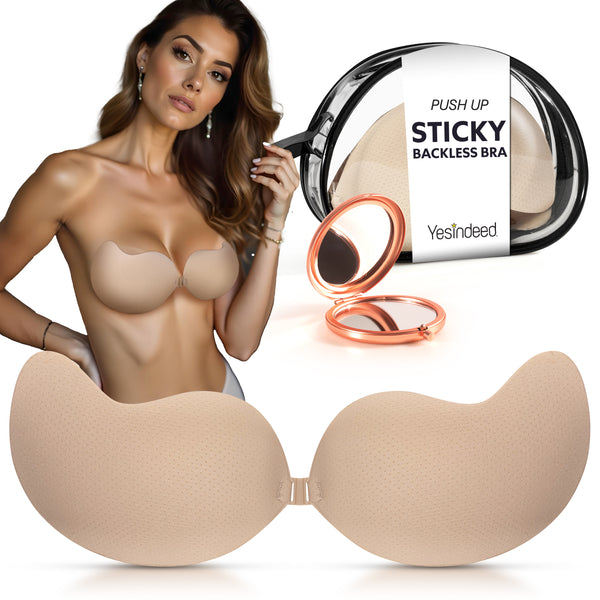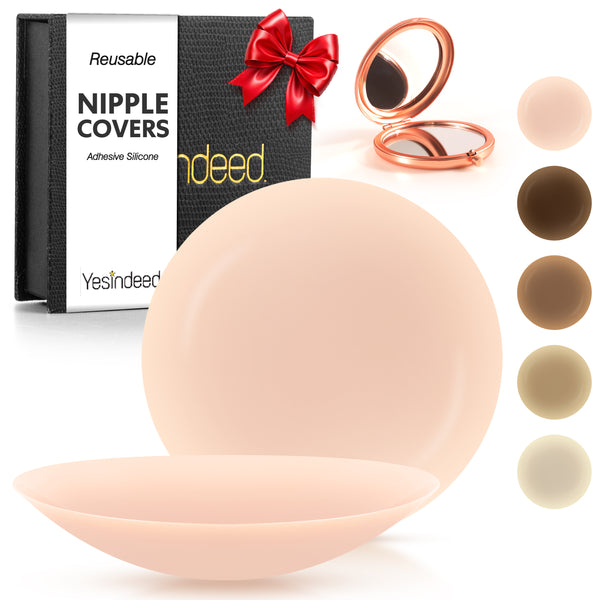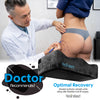Does the thought of sculpting a more defined jawline and eliminating that stubborn double chin intrigue you? If so, you're not alone. Countless people are turning to chin liposuction as an effective solution. This minimally invasive procedure could be your ticket to enhanced self-confidence and an improved aesthetic appearance. In this blog post, we delve deep into everything you need to know about chin liposuction - from the intricacies of the procedure to its cost and what to expect during recovery. Say goodbye to persistent fat deposits and welcome a new era of facial contouring!
Chin liposuction is a popular and effective cosmetic procedure that helps to eliminate stubborn fat in the chin and neck area. Benefits include improved facial contour, a more defined jawline, and a decreased appearance of a double chin. Recovery time is relatively short with little downtime, making it a great alternative to traditional surgical options. As with any medical procedure, it is important to consult with a qualified healthcare professional to determine if chin liposuction is right for you.
All About Chin Liposuction
Are you struggling with stubborn fat under your chin that just won't budge? Chin liposuction might be the solution you've been looking for. Chin liposuction is a cosmetic procedure designed to remove excess fat and redefine the contour of the chin and neck area, resulting in a more youthful and defined appearance. It is a minimally invasive surgical procedure that can provide dramatic results with minimal scarring and downtime.
Chin liposuction can be suitable for individuals who have tried dieting and exercise but still struggle with unwanted fat deposits in the chin area. It is important to note that chin liposuction is not a weight loss solution, but rather a targeted approach to eliminate localized fat deposits that may be resistant to traditional methods.
Imagine you've been working hard to maintain a healthy lifestyle, yet your double chin persists despite your efforts. Chin liposuction can help address this concern by specifically targeting the submental fat in the chin area.
During a consultation with a qualified plastic surgeon, they will assess your unique situation, discuss your goals and expectations, and determine if you are a suitable candidate for chin liposuction. They will also explain the procedure in detail, including potential risks and benefits.
Now that we have a good understanding of what chin liposuction is all about, let's explore the procedure itself.
The Chin Liposuction Procedure

Chin liposuction is typically performed as an outpatient procedure under local anesthesia or mild sedation. The surgeon will start by making small incisions strategically placed in discreet areas, such as beneath the chin or behind the ears. These incisions allow access for the insertion of a thin tube called a cannula.
Using gentle suction, the surgeon carefully maneuvers the cannula beneath the skin to target and remove excess fat cells from the chin area. This process contours and sculpts the chin, resulting in a more defined and youthful appearance. The duration of the procedure can vary depending on factors such as the amount of fat to be removed and the individual's specific anatomy.
After completing the liposuction process, the incisions are closed with sutures or adhesive strips. A compression garment may be recommended to minimize swelling and support the healing process. Your surgeon will provide detailed aftercare instructions to ensure optimal recovery and results.
Picture waking up from surgery feeling groggy but excited. You look in the mirror days later and notice a significant improvement in your chin contour. The excess fat that used to bother you is now gone, giving you a more sculpted and confident appearance.
Now that we have explored the specifics of the chin liposuction procedure, it's important to consider the science behind why this technique is effective.
The Science Behind Chin Liposuction

Chin liposuction is a popular cosmetic fat removal procedure for addressing a double chin that resists diet and exercise. To understand the science behind this procedure, let's explore how it works.
Chin liposuction generally involves the use of a small cannula, which is a thin tube-like instrument inserted through tiny incisions in the skin. This cannula is then used to suction out excess fat deposits in the chin area, sculpting a more defined jawline.
During the procedure, a tumescent solution is typically infused into the treatment area. This solution helps numb the area and also constricts blood vessels, minimizing bleeding and bruising. The cannula is then inserted, carefully targeting specific areas where fat needs to be removed.
The surgeon uses a back-and-forth motion with the cannula to break up the fat cells and gently suction them out. This process requires precision and skill to ensure optimal results without damaging surrounding tissues.
It's important to note that chin liposuction is considered a minimally invasive procedure. It is typically performed under local anesthesia or light sedation, allowing for minimal downtime and a quicker recovery compared to more invasive surgeries. However, like any surgical procedure, there are risks involved, such as infection or uneven contouring.
With advancements in technology, alternative treatments like Chin AirSculpt offer precision and reduced downtime compared to traditional liposuction procedures. These minimally invasive techniques use laser energy or ultrasound technology to liquefy the fat cells before their removal.
The science behind chin liposuction continues to evolve with new developments aimed at improving patient comfort, reducing side effects, and enhancing overall outcomes. Board-certified and experienced surgeons stay updated on these advancements to provide patients with innovative options for achieving their desired results.
Moving on from understanding the science behind chin liposuction, let's explore an important aspect that many individuals consider when contemplating this procedure: the cost.
- According to the American Society for Dermatologic Surgery, about 68 percent of individuals are not satisfied with the presence of a double chin, prompting cosmetic interventions like chin liposuction.
- As surveyed by RealSelf, around 87% of people who had undergone chin liposuction stated that they were happy with their results, qualifying it as a "worth it" procedure.
- The recovery time post-chin liposuction typically ranges between 10 to 14 days as per most plastic surgeons, which is comparatively less than many other types of invasive surgeries.
Cost Of Chin Liposuction
As with any medical procedure, the cost of chin liposuction can vary based on several factors. Understanding these factors can help you make an informed decision and plan accordingly. Let's discuss some key aspects that contribute to the overall cost:
- Geographic Location: The cost of chin liposuction may vary depending on where you live or where the procedure is performed. Major cities or regions with a high cost of living tend to have higher prices compared to smaller towns.
- Surgeon Experience: Highly experienced surgeons who specialize in chin liposuction typically charge higher fees. This is due to their expertise, skill, and reputation in delivering successful outcomes.
- Extent of the Procedure: The complexity and extent of your specific case can impact the cost of chin liposuction. For example, removing a significant amount of fat may require more time and effort, leading to a higher price tag.
- Additional Expenses: Apart from the surgeon's fee, there might be additional costs involved such as anesthesia fees, facility fees, medications, and post-operative garments. It is essential to inquire about these potential expenses upfront to avoid any surprises later on.
- Alternative Treatments: While traditional chin liposuction remains a popular choice, alternative treatments like Kybella also exist for reducing chin fat through injections of deoxycholic acid. These alternatives may require multiple sessions and be more time-consuming compared to liposuction, which could affect the overall cost.
The average price range for chin liposuction in 2023 is $3,500 to $7,500. It's worth noting that this estimate is just a general guideline, and individual circumstances will ultimately determine the final cost.
For instance, let's say Laura resides in New York City and decides to undergo chin liposuction with a highly experienced surgeon. Her procedure involves removing a substantial amount of fat, and she also incurs additional expenses such as facility fees and post-operative garments.
Considering all these factors, Laura's total cost for chin liposuction might fall towards the higher end of the average range or even exceed it.
Understanding the cost aspect of chin liposuction allows you to plan your finances accordingly. Now let's dive into another crucial topic - what to expect during your recovery period.
What To Expect During Recovery
Recovery after chin liposuction is an essential phase where your body heals and adjusts to the changes made during the procedure. It's important to have a realistic understanding of what to expect during this time so that you can be prepared and take necessary precautions.
After the surgery, it is common to experience some swelling, bruising, and discomfort in the treated area. This is a natural response of the body as it begins the healing process. The level of swelling and bruising can vary from person to person, but they generally subside gradually over time.
It is important to note that everyone's healing process is unique, and individual experiences may vary. Some individuals may have minimal swelling and discomfort, while others may experience more pronounced symptoms. Patience and following your surgeon's post-operative instructions are key in managing your recovery effectively.
During the initial days or weeks following the procedure, you may need to wear a compression garment or bandage around the treated area. This helps reduce swelling and supports the healing process. Your surgeon will provide specific instructions on how long you should wear the compression garment and when it can be removed.
Think of wearing a compression garment like having a cast for a broken bone. It provides support and stability as your body heals.
It is recommended to take some time off work or other activities to allow your body to rest and recover. You may also need to avoid strenuous physical activities or exercises for a certain period, as advised by your surgeon. It's crucial to follow these guidelines to ensure optimal healing.
Now that we understand what to expect during recovery from chin liposuction, let's explore the timeline for recovery and some helpful tips for a smooth recuperation.
Recovery Timeline And Tips
The timeline for recovery after chin liposuction can vary depending on several factors, such as individual healing ability, extent of the procedure, and adherence to post-operative instructions. While everyone's experience is unique, there are some general guidelines to give you an idea of how long it might take to recover fully.
In the first few days after the procedure, you may experience some swelling and discomfort. This is normal and can be managed with pain medication prescribed by your surgeon. The swelling will gradually subside over the next few weeks.
By around two weeks post-surgery, most patients start to notice significant improvements in the appearance of their chin and neck area. However, it's essential to keep in mind that complete healing can take several months. Your surgeon will schedule follow-up appointments to monitor your progress and provide further guidance.
|
Recovery Milestone |
Timeframe |
|
Initial swelling |
First few days |
|
Visible improvements |
Around two weeks |
|
Complete healing |
Several months |
During the recovery period, it's crucial to take care of yourself and follow your surgeon's instructions. Here are some helpful tips:
- Follow a healthy diet: Eating nutrient-rich foods can aid in the healing process and promote optimal recovery.
- Stay hydrated: Drinking plenty of water helps flush out toxins from your body and keeps your skin hydrated.
- Avoid sun exposure: Protecting your treated area from direct sunlight can prevent complications and help in reducing scarring.
- Take medications as prescribed: If your surgeon prescribes any antibiotics or pain medications, make sure to take them as directed.
- Keep communication open: If you have any concerns or questions during your recovery, don't hesitate to reach out to your surgeon for guidance.
It's important to remember that each person's recovery journey is unique, so listen to your body and give yourself the time needed for adequate healing.
Remember, recovering from chin liposuction is a process that requires patience and adherence to post-operative instructions. Following these guidelines will help ensure a smoother and more comfortable recovery experience.
Comparing Chin Liposuction With Other Treatments
When it comes to reducing a double chin and achieving a more sculpted jawline, there are several treatment options available in the market. Two popular choices for addressing excess chin fat are Kybella and chin liposuction. Each of these treatments has its own unique features and considerations that can help determine which option is best suited for individual needs.
Let's take a closer look at the differences between Kybella and chin liposuction:
Kybella, a non-surgical injectable treatment, utilizes synthetic deoxycholic acid. This acid works by breaking down and absorbing fat cells, resulting in a reduction in chin fat. It typically requires multiple sessions for optimal results, and while the outcomes are considered permanent, the full effect may take some time to be visible.
On the other hand, chin liposuction is a surgical procedure that involves removing excess fat cells using a small cannula. This technique allows for more dramatic results, as a larger amount of fat can be removed in a single session. The changes are typically noticeable immediately after the procedure.
While both treatments have their advantages and drawbacks, it's important to consider various factors when deciding between them. If you prefer a non-surgical option with minimal recovery time, Kybella might be worth exploring. Its subtler reduction of chin fat could be ideal if you're looking for gradual changes rather than an immediate transformation.
However, if you desire more significant and immediate results, along with the convenience of just one procedure, chin liposuction may be the better choice for you. The permanence of the outcome is another factor to consider; Kybella's results are considered permanent once the desired reduction is achieved over multiple sessions, while chin liposuction provides long-lasting results from a single procedure.
It's important to note that Kybella may not be as effective in treating larger amounts of chin fat as chin liposuction. In such cases, the surgical procedure may yield more satisfactory outcomes.
Ultimately, the decision between Kybella and chin liposuction depends on your personal goals, preferences, and comfort level with surgery. Consulting with a qualified medical professional who specializes in these treatments can provide valuable guidance based on your specific needs and expectations.
Now that we have compared chin liposuction with other treatments available for reducing a double chin, let's explore the procedure, cost, and recovery aspects of chin liposuction in more detail.
- Kybella and chin liposuction are two popular treatments for reducing double chin and achieving a more sculpted jawline. Kybella is a non-surgical injectable treatment that requires multiple sessions for optimal results, while chin liposuction is a surgical procedure that offers more dramatic and immediate results with just one session. Deciding between the two treatments depends on individual goals, preferences, and comfort level with surgery. It's essential to consult with a qualified medical professional who specializes in these treatments for personalized guidance.
How Much Does Chin Liposuction Typically Cost And Is It Covered By Insurance?
The cost of chin liposuction can vary depending on factors such as the location, surgeon's expertise, and additional fees. On average, it typically ranges from $2,000 to $5,000. However, it is important to note that insurance usually does not cover cosmetic procedures unless they are medically necessary. Chin liposuction is generally considered a cosmetic procedure for improving appearance rather than a medical necessity.
What Are The Potential Risks And Complications Associated With This Type Of Surgery?
Like any surgery, chin liposuction carries certain risks and potential complications. These can include infection, bleeding, scarring, unsatisfactory results, and adverse reactions to anesthesia. According to a study published in the Aesthetic Surgery Journal, the most common complication after chin liposuction is contour irregularity, accounting for 48% of reported complications. Furthermore, although rare, there have been instances of nerve injury resulting in temporary numbness or permanent loss of sensation in the treated area. It is important to consult with a board-certified plastic surgeon to discuss these risks and determine if chin liposuction is the right option for you.
Who Is A Good Candidate For Chin Liposuction And Who Should Avoid It?
A good candidate for chin liposuction is someone who has excess fat under the chin or a double chin and wants a more defined jawline. It is important for candidates to have good skin elasticity to ensure optimal results. On the other hand, individuals with certain medical conditions such as diabetes, heart disease, or poor overall health may not be suitable candidates for this procedure. Additionally, those with unrealistic expectations or emotional instability should avoid chin liposuction. According to statistics from the American Society of Plastic Surgeons, in 2020, there were approximately 30,000 chin liposuction procedures performed in the United States, highlighting its popularity and effectiveness when appropriate candidates choose to undergo the procedure.
Are There Non-Surgical Alternatives To Chin Liposuction That Can Achieve Similar Results?
Yes, there are non-surgical alternatives to chin liposuction that can achieve similar results. One such alternative is Kybella, an FDA-approved injectable treatment that targets and eliminates fat cells in the chin area. Clinical studies have shown significant improvement in submental fullness after Kybella treatment, with 79% of participants reporting satisfaction with their appearance. Other non-surgical options include CoolSculpting, which uses controlled cooling technology to freeze and eliminate fat cells, and radiofrequency treatments like Exilis and Thermage, which can provide skin tightening in the chin area. While these alternatives may require multiple sessions and may not be as effective for larger amounts of fat, they offer a less invasive option with minimal downtime and fewer risks compared to surgery.
How Long Does Recovery Take After A Chin Liposuction Procedure?
The recovery time after a chin liposuction procedure typically takes about 1-2 weeks. During this period, patients might experience swelling, bruising, and mild discomfort in the treated area. However, these symptoms gradually subside, allowing individuals to resume their normal activities. It's important to follow post-operative instructions provided by your surgeon to promote proper healing. According to a study conducted on 100 chin liposuction patients, 92% reported feeling satisfied with their recovery progress within two weeks.









